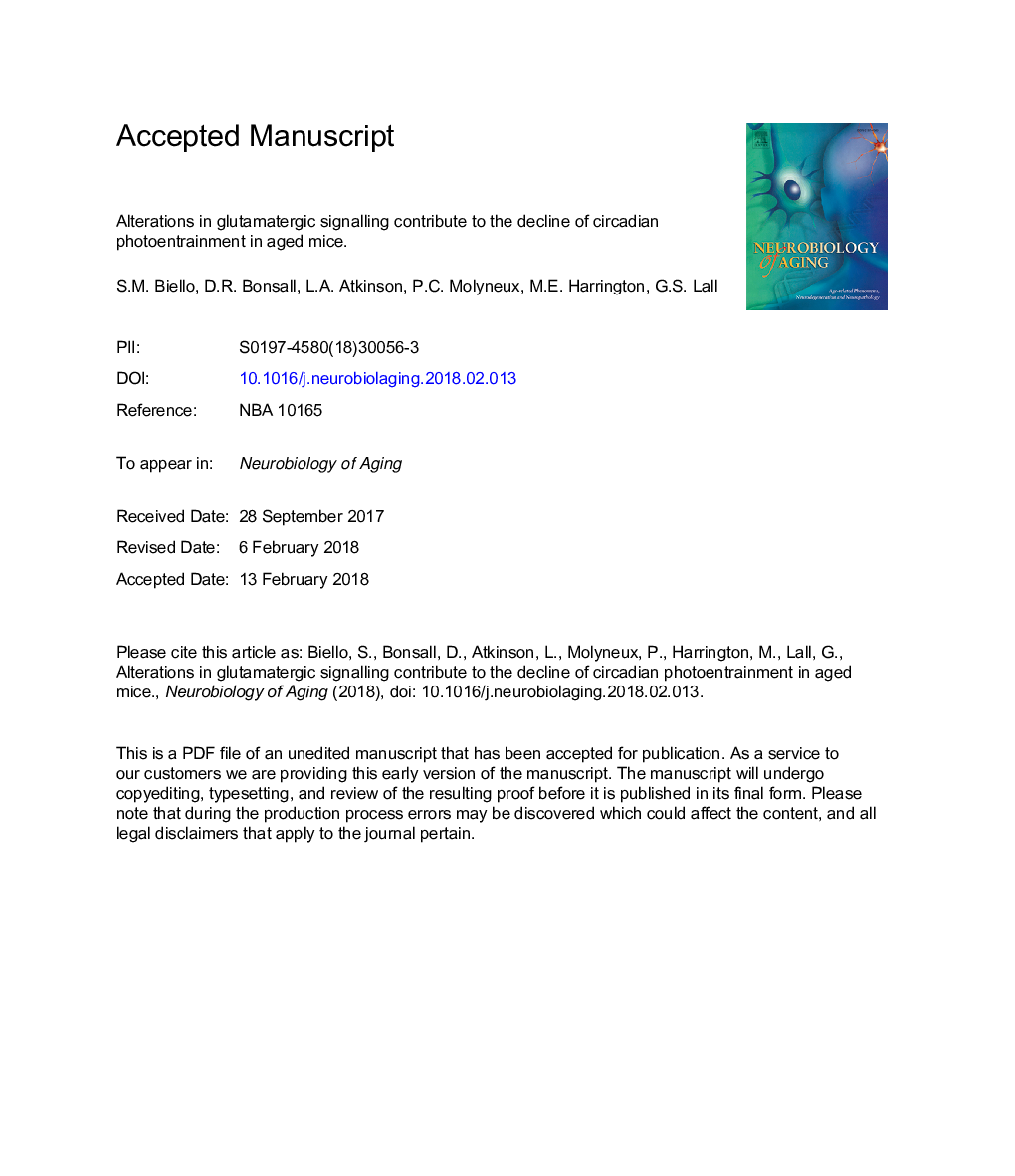| Article ID | Journal | Published Year | Pages | File Type |
|---|---|---|---|---|
| 6802956 | Neurobiology of Aging | 2018 | 41 Pages |
Abstract
Robust physiological circadian rhythms form an integral part of well-being. The aging process has been found to negatively impact systems that drive circadian physiology, typically manifesting as symptoms associated with abnormal/disrupted sleeping patterns. Here, we investigated the age-related decline in light-driven circadian entrainment in male C57BL/6J mice. We compared light-driven resetting of circadian behavioral activity in young (1-2Â months) and old (14-18Â months) mice and explored alterations in the glutamatergic pathway at the level of the circadian pacemaker, the suprachiasmatic nucleus (SCN). Aged animals showed a significant reduction in sensitivity to behavioral phase resetting by light. We show that this change was through alterations in N-Methyl-D-aspartate (NMDA) signaling at the SCN, where NMDA, a glutamatergic agonist, was less potent in inducing clock resetting. Finally, we show that this shift in NMDA sensitivity was through the reduced SCN expression of this receptor's NR2B subunit. Only in young animals did an NR2B antagonist attenuate behavioral resetting. These results can help target treatments that aim to improve both physiological and behavioral circadian entrainment in aged populations.
Related Topics
Life Sciences
Biochemistry, Genetics and Molecular Biology
Ageing
Authors
Stephany M. Biello, David R. Bonsall, Lynsey A. Atkinson, Penny C. Molyneux, Mary E. Harrington, Gurprit S. Lall,
